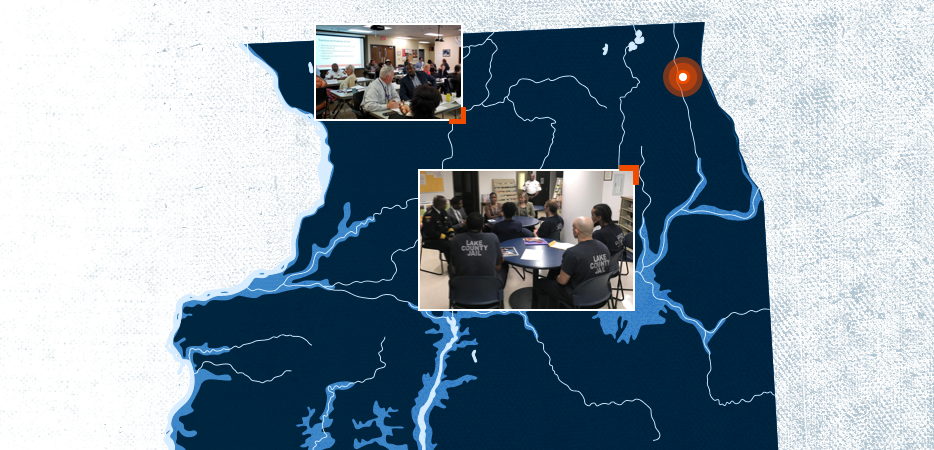Background
Lake County joined the Safety and Justice Challenge to help reduce incarceration rates for individuals with low-risk, non-violent charges, and to address racial and ethnic disparities in the criminal justice system. The reliance on detention in jail disrupts the stability of individuals, their families, and the community at large while also leading to higher re-arrest rates and worse case outcomes with more back-end incarceration.
According to several independent analyses, individuals being detained pretrial and people with unmet behavioral health needs were primary drivers of the Lake County jail population. In 2017, 80% of people in jail were detained pretrial with an average length of stay of 19 days and only 5% of the jail population remained in custody for less than 3 days. A May 2018 snapshot revealed that 44% of the jail population in custody had cash bonds over $50,000.
An additional independent analysis of 2018 jail admissions indicated that Black adults were 8.5 times more likely than white adults to be admitted to jail, while Latino adults were 1.9 times more likely than white adults to be admitted to jail. Similarly, an analysis of 2019 jail admissions indicate Black people made up 35% of jail admissions and only 7% of the Lake County population.
Lake County stakeholders, convened by the Sheriff’s Office, collectively decided it was time to take action and address pretrial detention, behavioral health needs contributing to system involvement, and racial and ethnic disparities.








